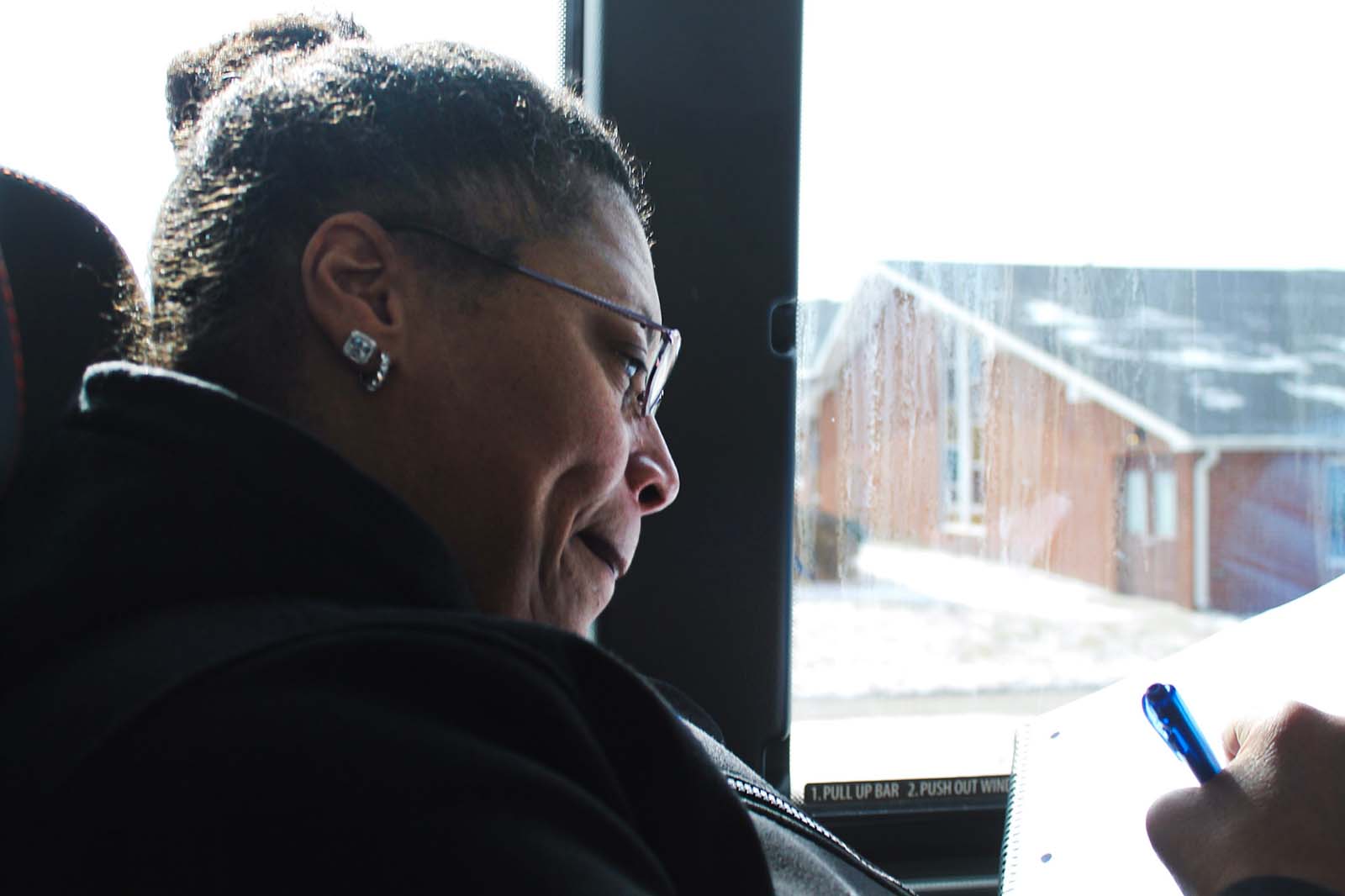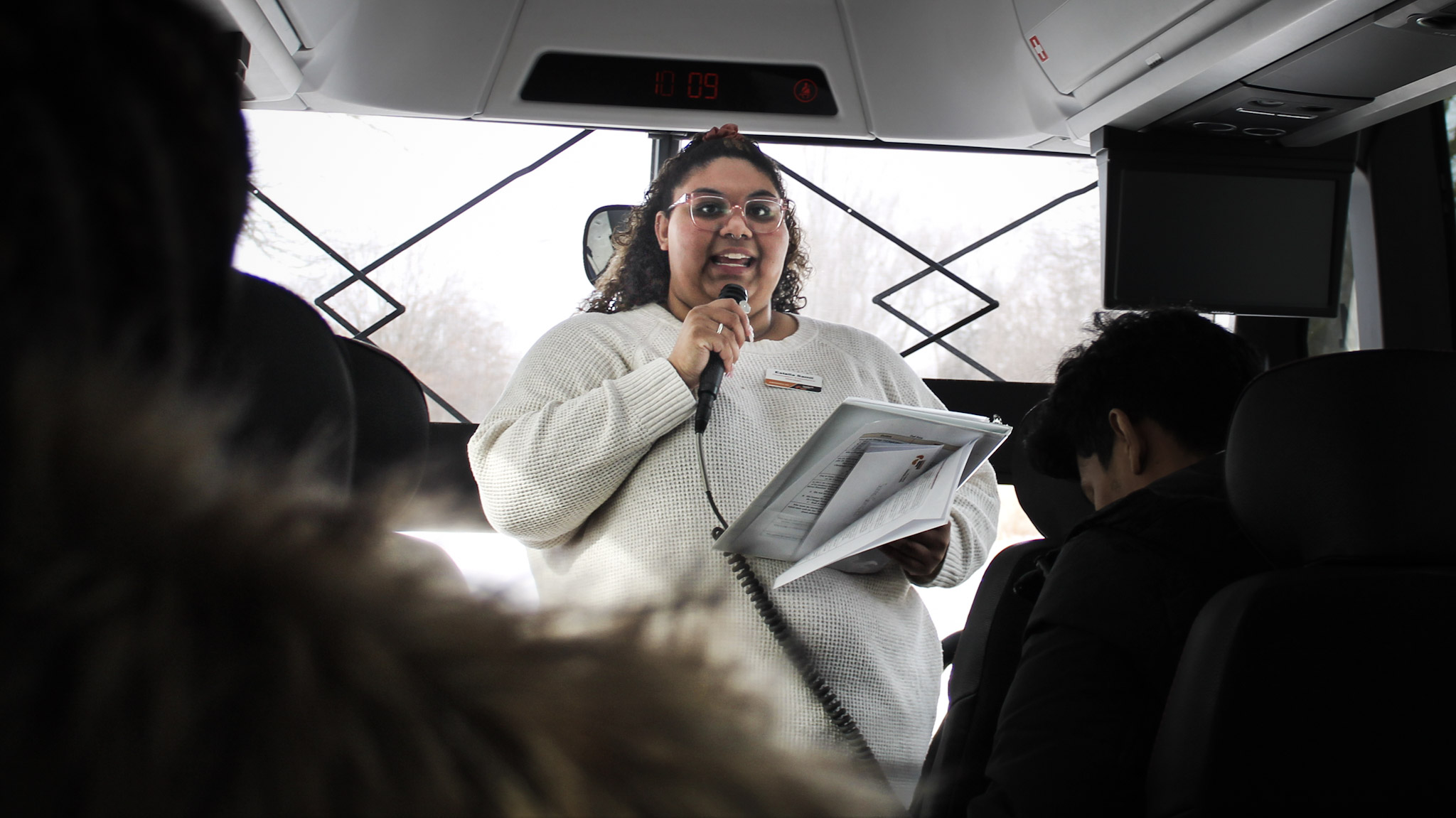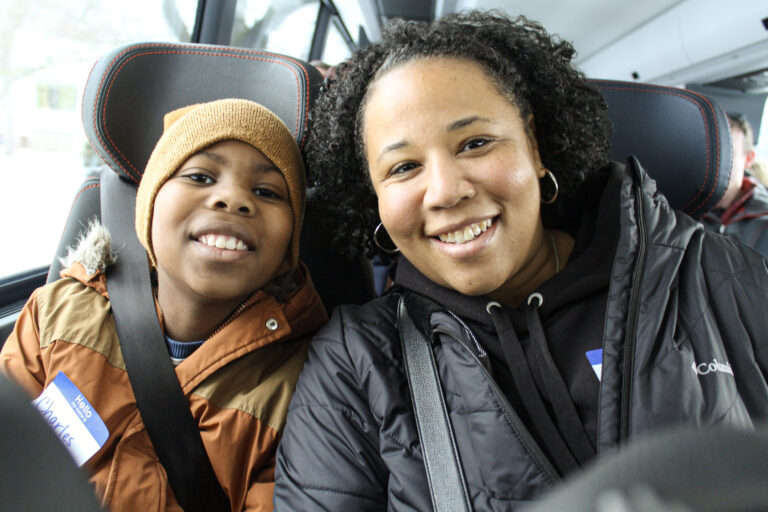CHAMPAIGN — On a cold February morning, around 30 people, young and old, lined up to board a Peoria Charter bus parked at the Douglass Center in Champaign.
Estella Samii picked up her microphone to kick off the first public bus tour for the Champaign County African American Heritage Trail.
“African Americans began moving into east central Illinois in the 1820s and 30s, mainly coming from Kentucky, Tennessee, North Carolina and Virginia as both enslaved and freed people,” Samii said in her opening remarks.

Independent historian Kimberly France listened and took notes from a bus seat near the front. She published “Black Settlements in Southern Illinois,” in 2024, a book exploring the history of Black communities that formed in the southern part of the state.
France began the project after she stumbled across a cemetery director for what she thought was family land in Thompsonville.
“There were over 40 Black families that lived there, and I knew I wasn’t related to them. That’s how I discovered that it was a Black settlement,” France said.
Eventually she discovered Black settlements in all 16 of the southern Illinois counties she looked into. Some formed before American independence around salt and coal mines and railroads. Many of the communities dispersed later due to tornadoes, periods of violence against them or the draw of integration.
She attempted to collaborate with an Illinois university on the project before working with Arcadia Publishing to release the book.
France said the bus tour was unique among the Illinois counties she had visited.
“The tour brings people together who would not have otherwise met, and it gives the opportunity for more knowledge to be shared,” France said.

One of the most enthusiastic attendees on the tour is 10-year-old Charles Hoskins. A fifth grader at Judah Christian School, Hoskins answered many of the tour guide’s questions for the group.
Hoskins said he loves local history — like the story of James R. Burgess Jr, the first African American to be elected countywide in Champaign County. He became the state’s attorney in 1972.
“It’s important because it can repeat itself one day. It can happen again, like [there] might be the 100th Black person to be elected there,” Hoskins said.
His mom, Jessica Hoskins, teaches at the Rise Center at the Columbia school building, which houses Champaign Unit 4’s alternative education programs.
“Where I teach, I’m not too far from plaques, and we could probably even go there to read and learn about some of the history that way. A tour might be a little bit too much for younger kids,” she said, laughing.

The students who are Charles’ age on the tour are focused, though.
Samii said she’s young enough to remember what engaged her as a student.
“It’s about being okay to laugh at yourself,” Samii said. “Schools say, ‘Raise your hand. Keep your head down,’ I try to be more [conversational] so they feel a little bit more relaxed.”
Samii works for Experience Champaign-Urbana, the official tourism organization for Champaign County. After community members asked Experience Champaign-Urbana to help memorialize Black history in the area, Samii was asked to script and lead the bus tour.
During the tour, she often asks attendees to repeat names back to her, so they will remember figures like Maudelle Tanner Brown Bousfield.
Bousfield was the first Black woman to enroll at the University of Illinois Urbana-Champaign in 1903. She went on to be the first Black principal of a Chicago high school.
Samii pointed out a University of Illinois residence hall named after her — and noted that Bousfield, like many African Americans who took classes there, were not permitted to live on campus until 1946.
She said the story is a reminder of who paved the way for her as she finishes her college degree.
“Now it’s up to us. If other people are going to try to silence this, erase it and make it so people don’t know, it’s up to us,” Samii said.
Samii was particularly upset the day the U.S. Air Force removed its training videos about the Tuskegee Airmen, the nation’s first Black pilots, who trained in Rantoul. The Air Force said it was obeying a directive from President Trump to end federal diversity, equity and inclusion initiatives. After bipartisan backlash, the videos were put back online.
Amid the confusion about what falls under the targeted DEI initiatives, some nonprofits are concerned Trump will block their funding for race-related initiatives — like the bus tour.
Samii said Experience Champaign-Urbana gets financial support from a variety of private and public sources.
“As of right now, we believe we’re in the clear,” Samii said.

After almost two hours, the bus rolls to a stop, back where it started.
Jessica Hoskins and her son Charles said they appreciated the experience.
“What I found most interesting being in education was just learning about Miss Bousfield and how long it took for African Americans just to be able to live on campus,” Jessica Hoskins said.
Charles ended up most excited about the murals the group visited during the bus tour.
“I saw other murals along the way, but my mom kept telling me they were not part of them, but they still look great. I think everything went well,” Charles said.
Experience Champaign Urbana plans to run the public tours four times a year, in addition to private tours for schools and other organizations.

